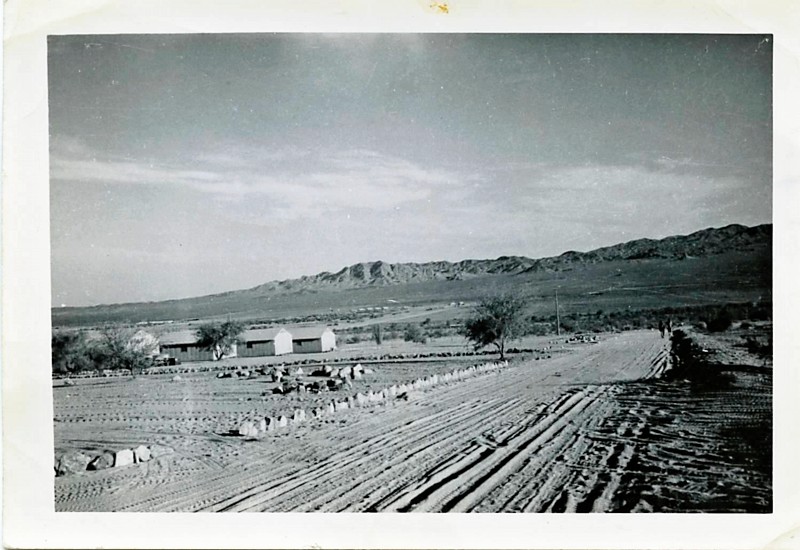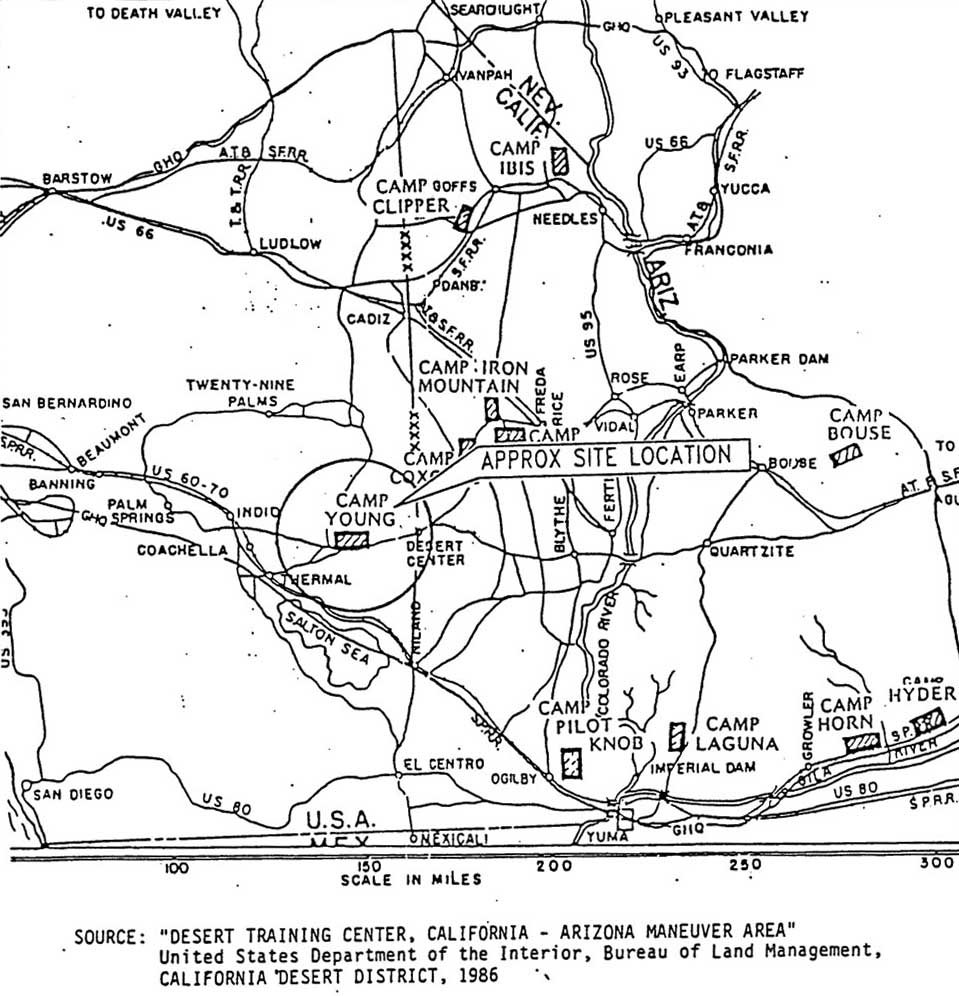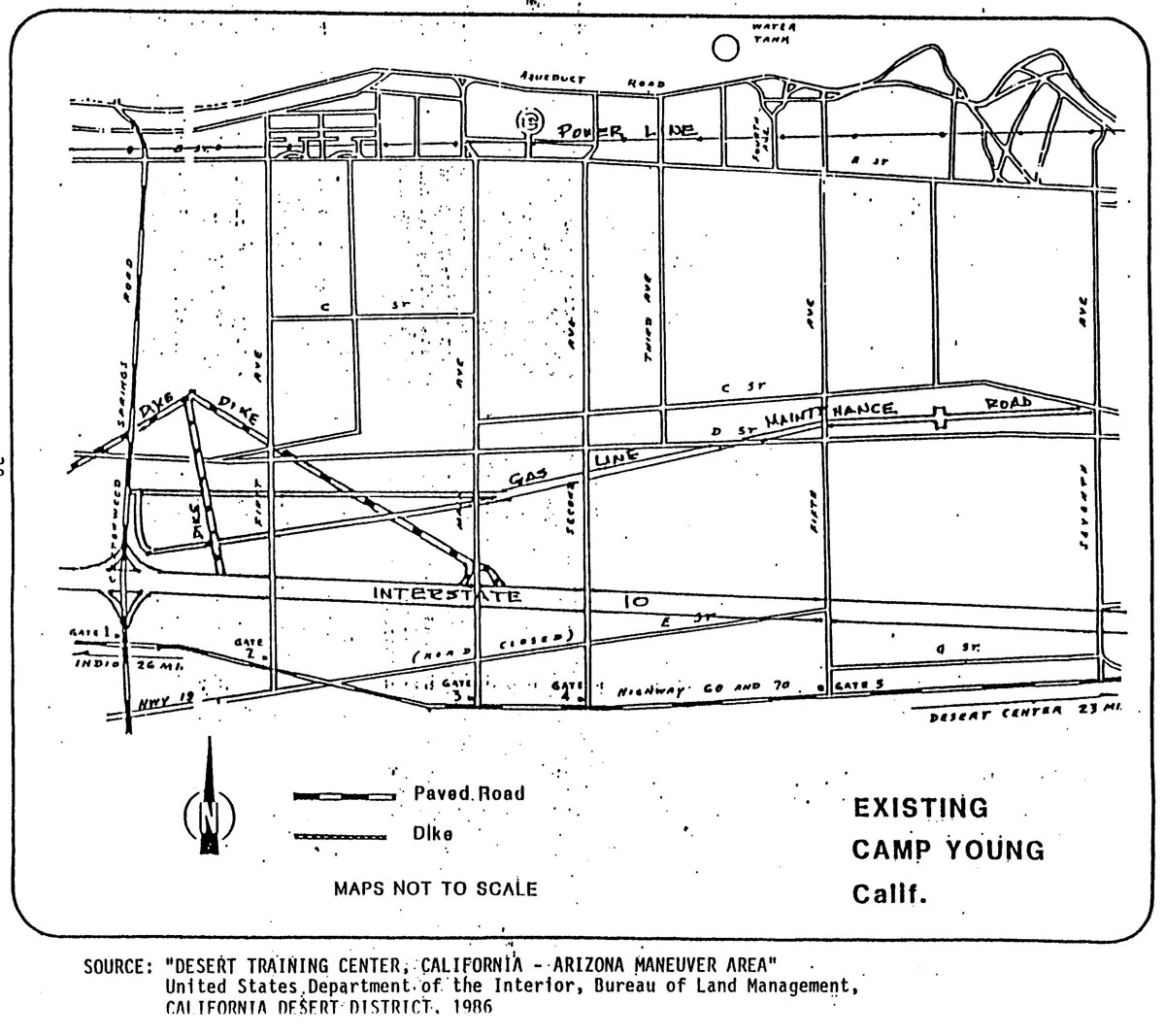
The area chosen in the Mojave Desert was ultimately 350 miles wide and 250 miles deep. On 20 June 1942 the War Department acquired the land from the Department of the Interior by Public Land Order No. 1. The area included several sections in Riverside County, ranging from Indio, California to Arizona and from Las Vegas to Yuma. On May 12, 1942, by announcement of General Orders No. 7, the Desert Training Center was named Camp Young. On January 27, 1943, by announcement of General Orders No. 8, Camp Young "proper" (3,279.89 acres) became the Headquarters of the Desert Training Center/California-Arizona Maneuver Area (DTC/CAMA). By November 1943 CAM had enlarged and included Camp Young, Camp Coxcomb, Camp Iron Mountain, Camp Granite, Camp Essex (later renamed Camp Clipper), Camp Ibis, Camp Hyder, Camp Horn, Camp Laguna, Camp Pilot Knob, Camp Bouse and several bombing and artillery ranges.

